China’s First Pure Solar Car to Reduce 25 kg of Carbon Emission Per 100 km
The three-seater purely solar-powered car can drive for up to 74.8 km on a single charge
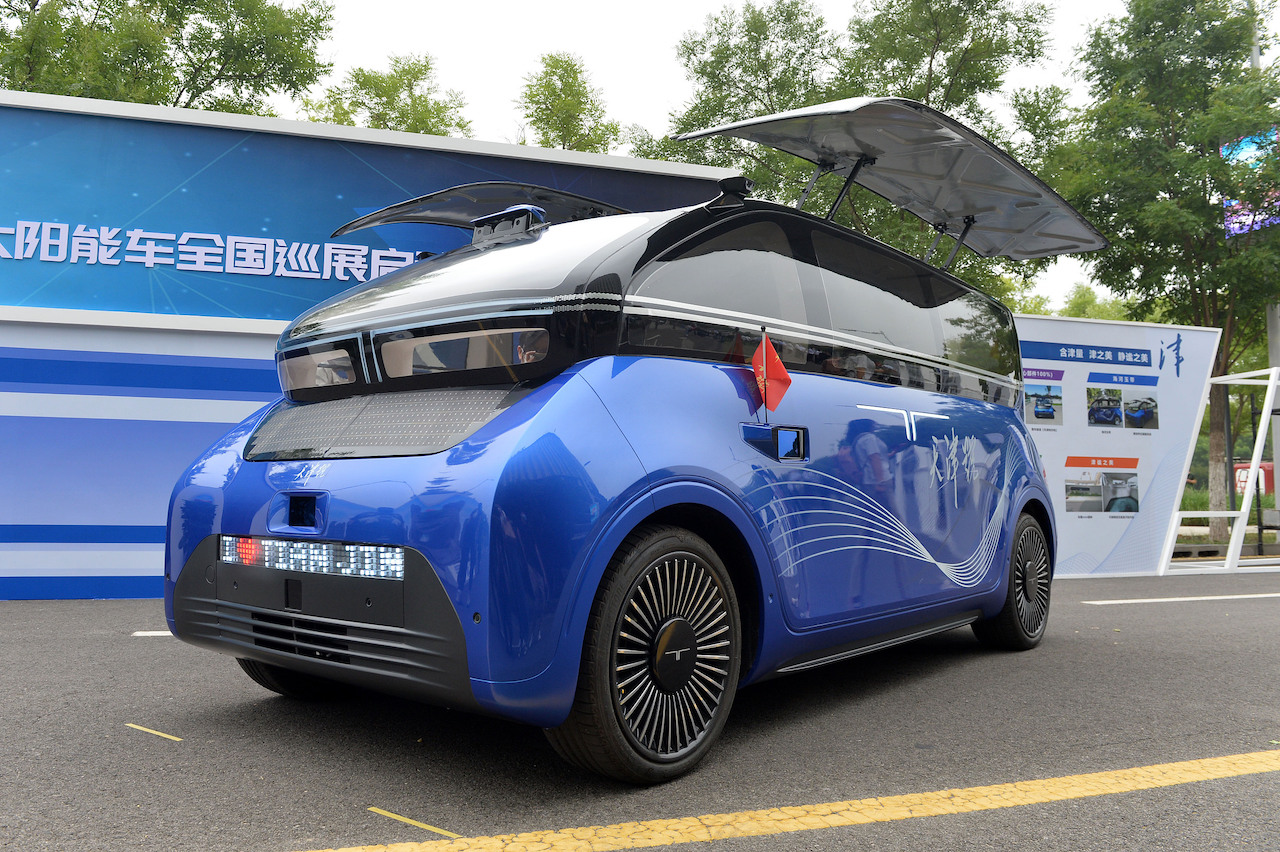
Image: Twitter
At the sixth World Intelligence Conference, China unveiled the country’s first pure solar car ‘Tianjin.’ This new purely solar-powered car is developed by 42 companies and three universities. It took around five months to create this four-wheeler, so there are certain constraints that restrict its range to around 47 miles. Nonetheless, it comes with pre-installed equipment for autonomous driving at level 4 which ensures future-proofing.
The makers claim that the solar car features a plethora of advanced technologies. Its solar module area takes up 8.1 square meters, out of which 5 square meters are occupied by the solar cells. Now that’s even better than the recently revealed Lightyear solar electric vehicle. However, there are no specs thrilling enough to get excited about as compared to other solar EVs on the horizon. Still, it is fairly impressive, as most of the functions are solely powered by the sun’s energy.
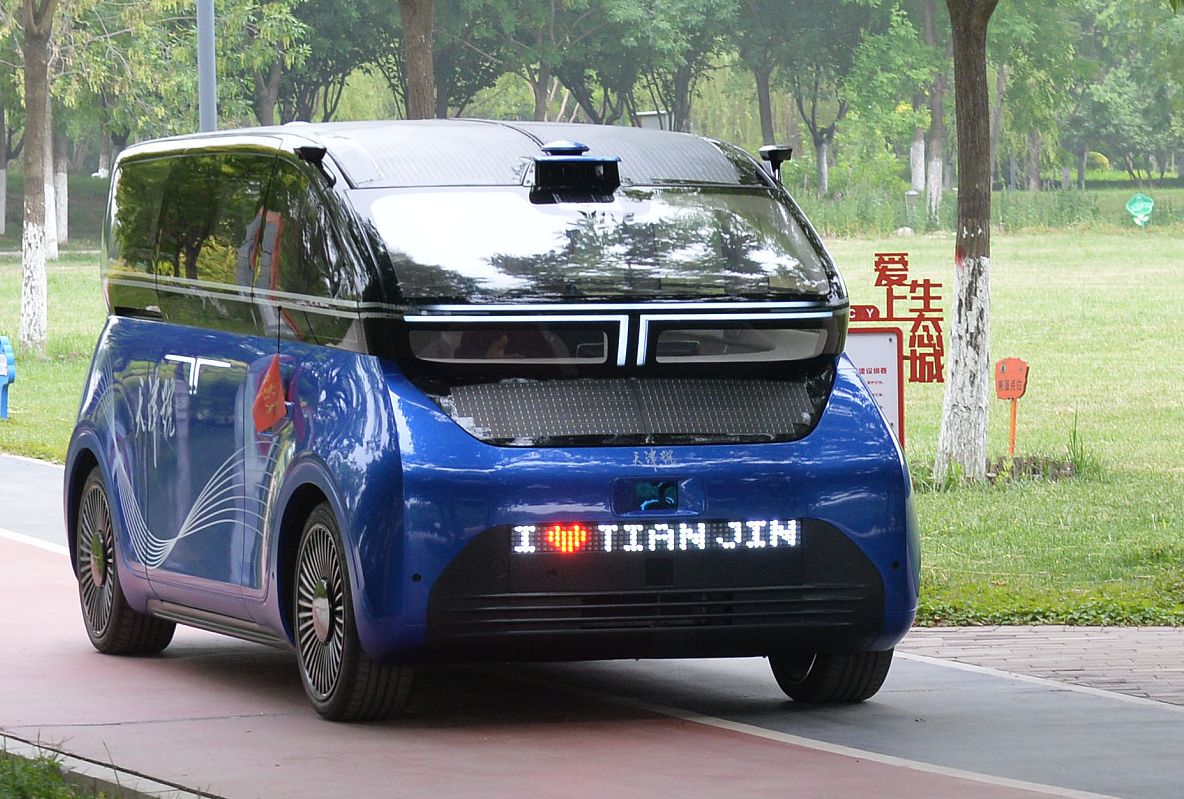
Image: Twitter
What makes it more interesting is that Tianjin is a proof-of-concept car that has the potential to run completely on clean energy. Moreover, it can decrease 25 kg of carbon emissions per 100 km that it traverses. Here are the pertinent specs of this pure solar vehicle:
- Seating for three plus a driver
- The wheelbase is 2,850 mm
- Body weight: 1,020 kg
- Vehicle dimensions: 4,080 mm long × 1,770 mm wide × 1,811 mm tall (13.4 x 5.8 x 5.9 ft.)
- Comes integrated with a battery pack and has an energy density of 330 Wh/kg
- Maximum daily power generation of around 7.6 kWh on sunny days
- The top speed is 79.2km/h
- Optimum tested range is 74.8 km
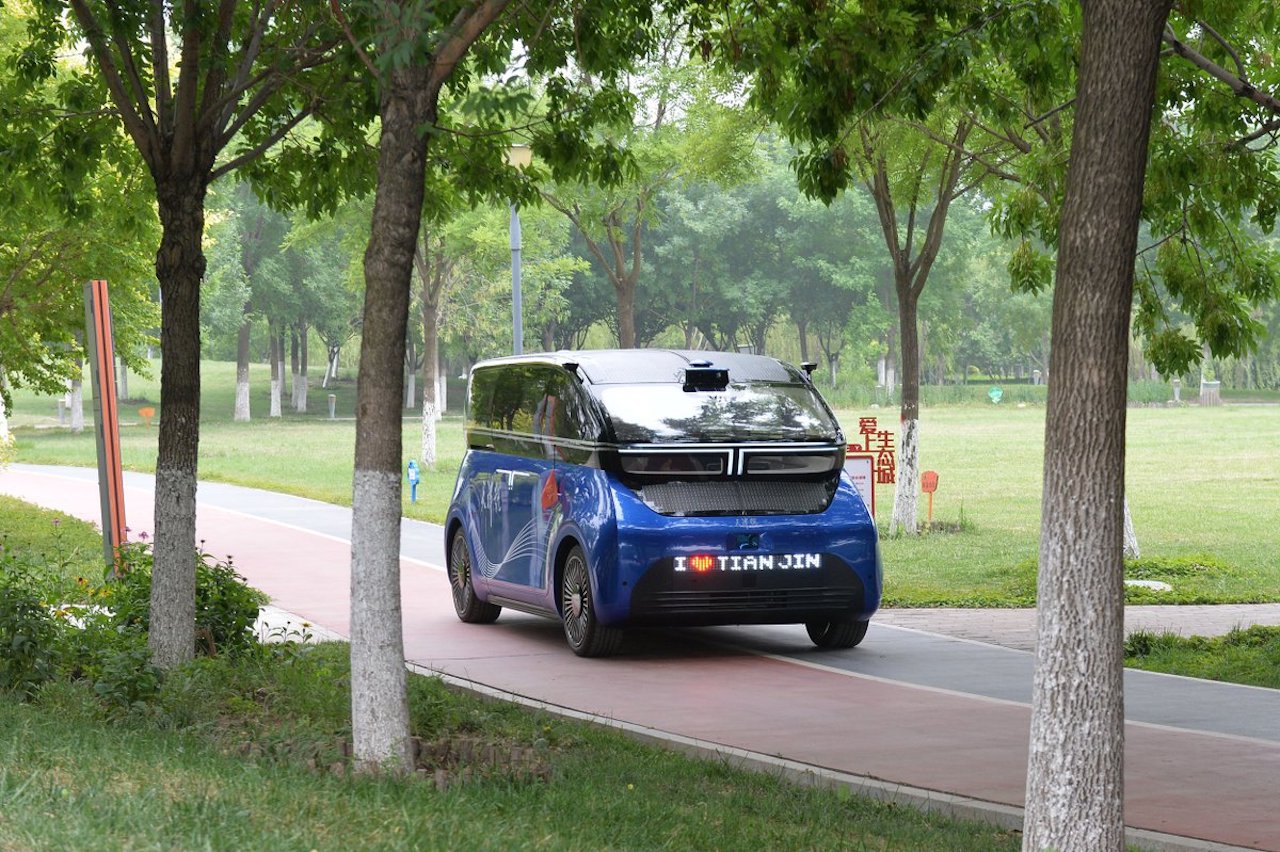
Image: Twitter
It’s quite exciting to imagine new possibilities that solar energy can create for vehicles running without emissions. Currently, the new solar-powered car is on tour in China, we hope to hear more about its prospective use case scenarios soon.
So far, you can check out CnEVPost’s look at Tianjin in the video given below:
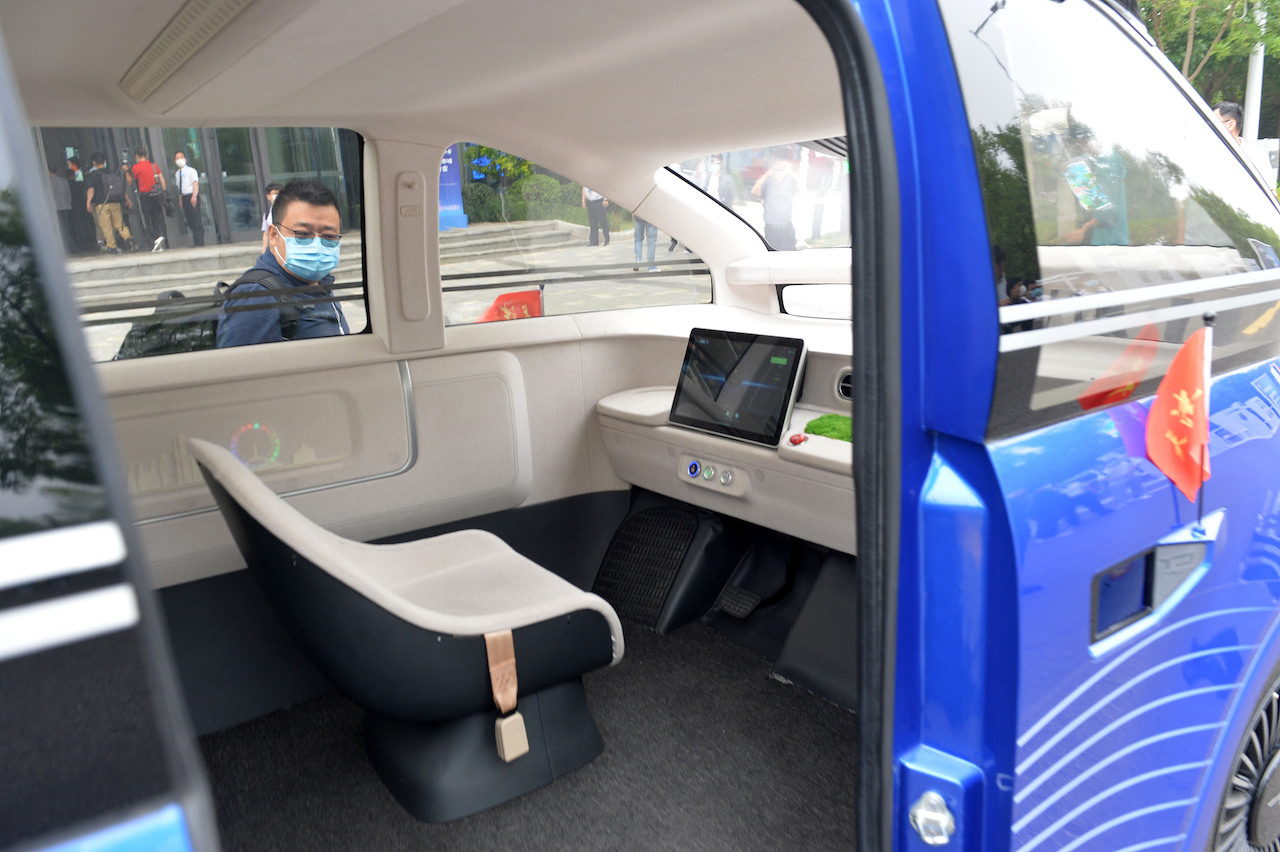
Image: Twitter
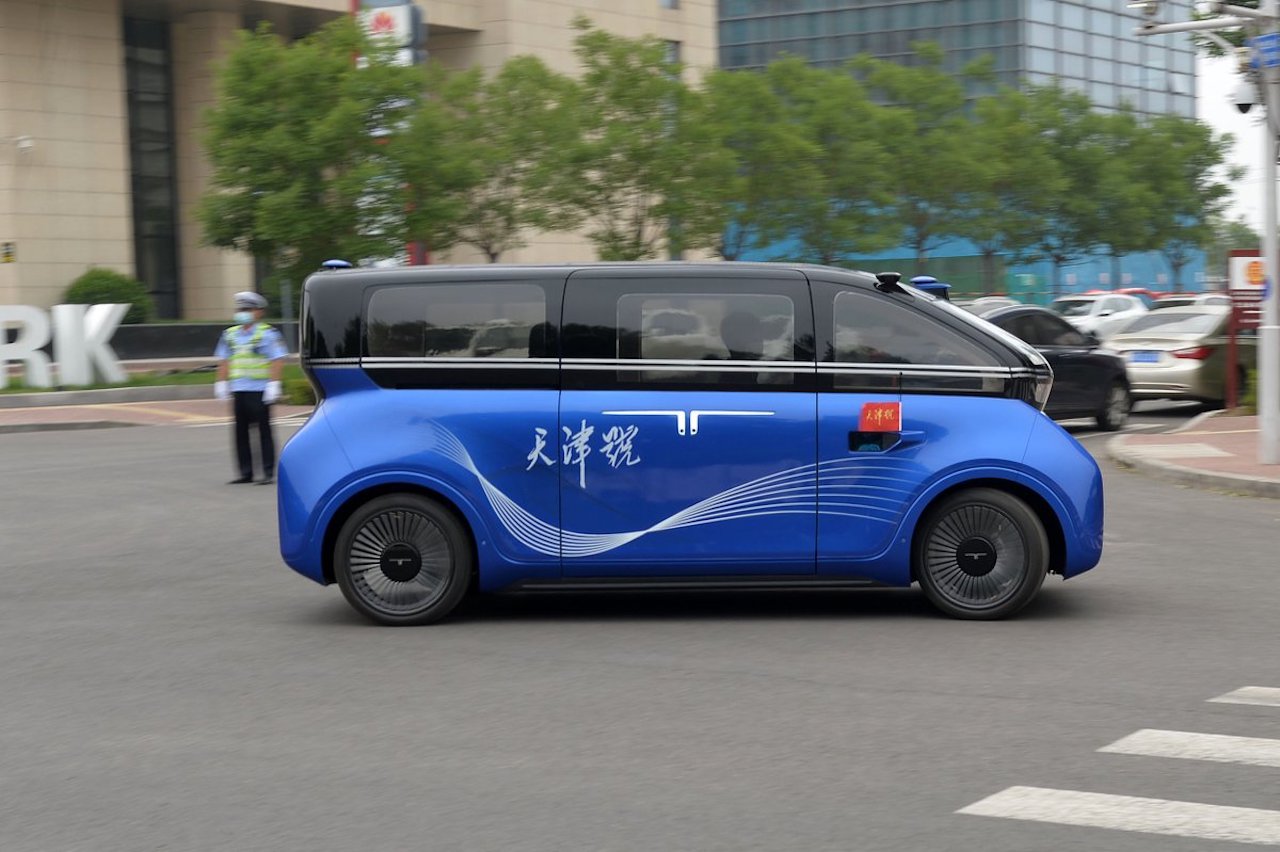
Image: Twitter
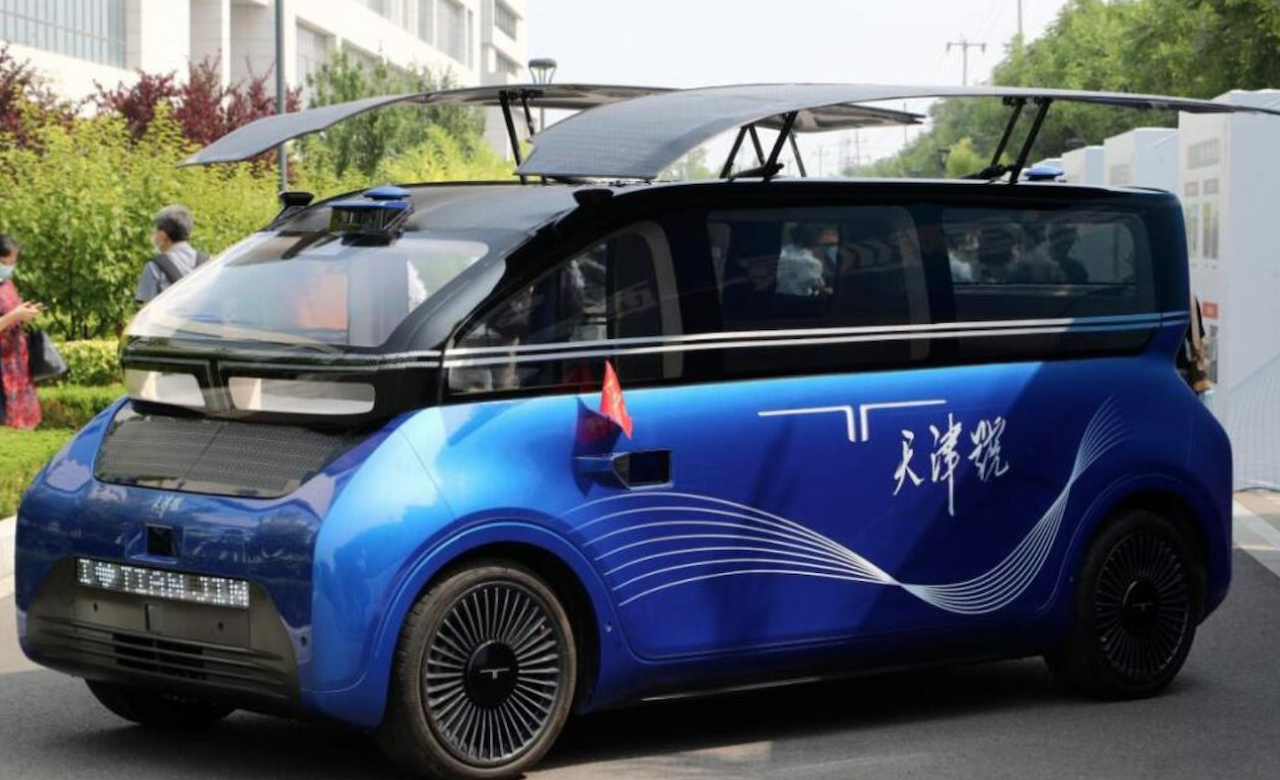
Image: Twitter
Via: Electrek


